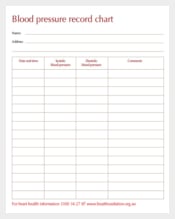

Systolic or diastolic blood pressure readings may both be used to diagnose high blood pressure. Elevated systolic blood pressure increases your risk of cardiac and vascular diseases. As you age, systolic blood pressure steadily increases from the chronic buildup of plaque and stiffness of your arteries. A high systolic blood pressure reading is a major marker for heart disease if you are older than 50 years. However, some doctors or healthcare providers focus on the first (systolic pressure) number. Diastolic blood pressure (the lower number) measures the pressure in your blood vessels when your heart is resting between beats.

Systolic blood pressure (the above number in a blood pressure reading) measures the pressure in your blood vessels when your heart pumps blood.Which is more important: systolic or diastolic blood pressure?īoth systolic and diastolic blood pressure are vital indicators of heart health. Hence, blood pressure (BP) 120/80 mm Hg means 120 is the systolic number, and 80 is the diastolic number This tells you what your blood pressure is when your heart is at rest between heartbeats The second (diastolic pressure) is measured before the heart contracts and the lowest.This tells you the force of your blood against the artery walls when your heart beats. The first (systolic pressure) is measured after the heart contracts and is highest.Its measurement is recorded by two numbers. It is produced primarily by the contraction of the heart muscle. Although the average blood pressure (120/80mmHg) for a person remains constant, it shows minor fluctuations throughout the day, declining while relaxing and momentarily increasing while being excited or under stress. Blood pressure can be categorized into five different types include normal, elevated, hypertension stage I, hypertension stage II, and hypertensive crisis.īlood pressure is the force applied by the blood over the inner walls of the arteries.


 0 kommentar(er)
0 kommentar(er)
